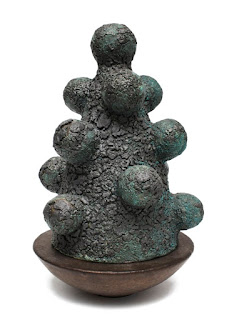Summer is a great time to add visual content to preaching. The relaxed nature of the season offers opportunities to try new things for a week or two, and even build some attendance when people know there will be something different and visually interesting to hold their attention.
Here is an idea that could work on July 10 for lectionary preachers with Luke 10:25-28 and the Great Commandment (best by referencing Mark 12:29 and the Shema). For those not using lectionary, this idea can work on any Sunday, or save it for next Valentine's Day!
 While visiting the Vatican Museum in Rome, I noticed the stylized heart from an old sarcophagus with the heart serving as the "O" in the DOM, the abbreviation for "to God most good and great."
While visiting the Vatican Museum in Rome, I noticed the stylized heart from an old sarcophagus with the heart serving as the "O" in the DOM, the abbreviation for "to God most good and great." What struck me was how this heart is not like the usual imagery of the hearts we see!
Some time later, while holding my young granddaughter in my arms, I noticed that her ear seemed to keep the shape of this heart! This seems to be common with most infants and toddlers until the ear develops into a more adult (less heart-like!) shape.
 Combining these images of hearts with the shape of toddler ears and various scriptures can offer some effective visual anchors to your theme, as with Proverbs 2:2, or the Shema in Deut. 6:4-9, and with the Great Commandment particularly in Matthew 22:36-40, or Mark 12: 28-31.
Combining these images of hearts with the shape of toddler ears and various scriptures can offer some effective visual anchors to your theme, as with Proverbs 2:2, or the Shema in Deut. 6:4-9, and with the Great Commandment particularly in Matthew 22:36-40, or Mark 12: 28-31.
Amazingly we find a connection with ear and heart from the Rule of St. Benedict, "Attend to the Master's instruction with the ear of your heart." We may also realize our heart of love grows out of response to God: "We love because God first loved us." (I Jn 4:19)

As our bodies, minds, and hearts grow and change over time, we gain love's wisdom and continue to be called into a life of compassion, generosity, and loving kindness!









